After a couple weeks of dissecting Ikoria Limited, the format’s settled down a bit. It turns out that the seemingly high amount of Limited complexity plays out much more smoothly than expected. Much of this is likely due to the relatively small number of archetypes, but there’s a lot to experience within the various permutations of the five major ones.
Today, let’s shift from a macro level view to the micro view. There are a bunch of noteworthy and novel new cards, so let’s take the opportunity to give a selection of them their due!
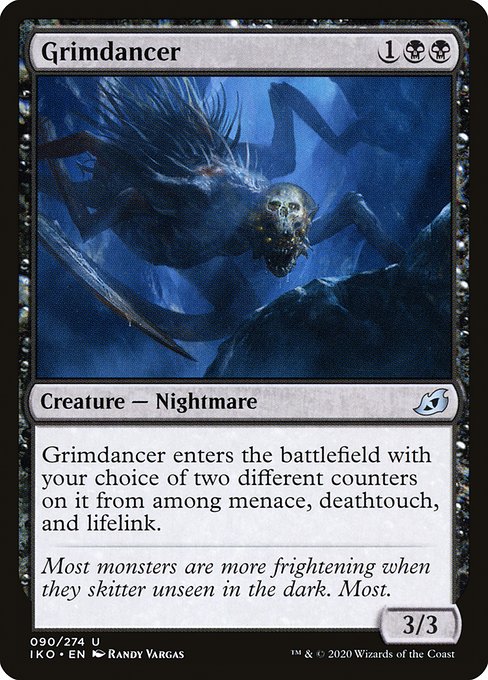
Let’s start with this beautiful Spike-Mel card. Grimdancer is a continuation of the Vampire Nighthawk family line, combining solid stats and a smattering of black keywords. But this card can only exist on Ikoria, land of ability counters. This technology enables you to build your own Nighthawk, providing the a unique, skill-testing puzzle: which of its three abilities is least relevant to the situation at hand? How can you leverage what you know about your own deck, your opponent’s deck, and the matchup in order to build the best possible creature?
The most common option is probably Menace plus Deathtouch, which is what you’ll want when you’re ahead or at parity. It offers the best chance of setting up awkward blocks to force your opponent into two-for-one-ing themselves. If you’re behind, the choice is similarly easy: Deathtouch plus Lifelink turns Grimdancer into a defensive removal spell that kills the best non-flying attacker and gains you a nice chunk of life.
Menace plus Lifelink is the most interesting choice, as it comes up the least. I’ve chosen this mode before, but usually only when two things are true. Either I’m racing against my opponent (who likely has a bunch of evasive creatures) and having lifegain for a few hits is worth sacrificing a potential two-for-one down the line. Or my opponent’s deck is full of small creatures, in which case Deathtouch is fairly redundant on a double block.
Despite being a literal nightmare, Grimdancer is a wonderfully beautiful card that perfectly employs the Ikoria-specific design space of ability counters.
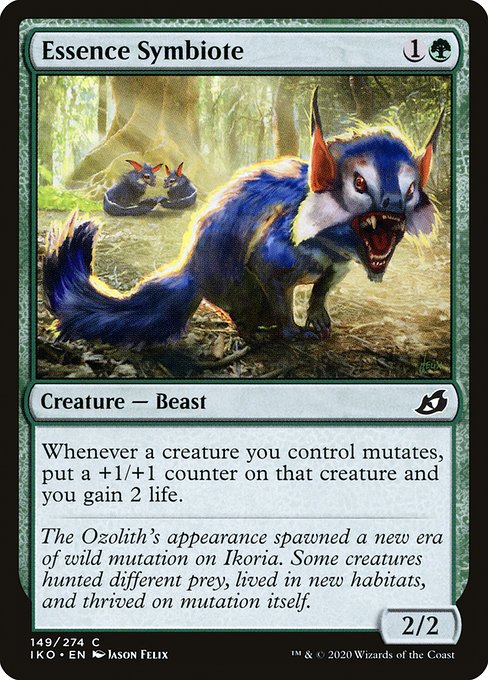
We often see a bear with upside to showcase a new mechanic. Hell, WotC even poked fun at this simple, repeatable design space with Bear with Set’s Mechanic. It’s difficult to make a common Mutating 2/2 that doesn’t have an incredibly powerful Mutate trigger, because when could you upgrade a creature into a 2/2 and be happy about that? But a really powerful trigger on a cheap, common creature would likely make it too snowbally when you use it as the foundation for a Mutate pile. So, instead we get this incredibly potent threat.
I do wonder whether this should be an uncommon, as its cousins Zagoth Mamba and Pollywog Symbiote are. A repeatable ability to generate life and +1/+1 counters doesn’t feel like a common, but Mutation is rare and dramatic enough that this seems worth of a rarity downshift. If there were more Mutate creatures with Flash, this probably couldn’t exist—but that’s one of the many reasons why there probably aren’t many.
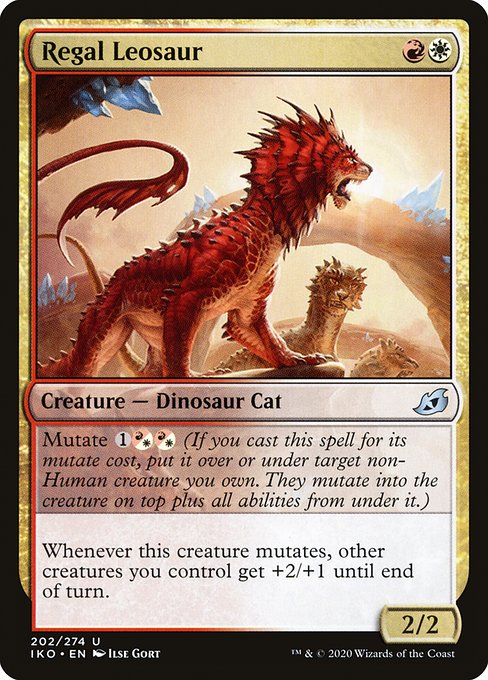
Regal Leosaur and Huntmaster Liger are head-scratchers. They play especially poorly in Limited, as white is the color with the most humans (and so the fewest Mutate targets) and the worst Mutate creatures. Most Mutate creatures provide about a card’s worth of value with minimal effort, but neither of these do—they’re meant to generate massive attacks out of nowhere and swing the game to your favor if not outright win. But Huntmaster Liger doesn’t even do that, since the first Mutate makes it into a Vryn Tactician that forces you to sacrifice a creature.
Mutate is a strong mechanic that has boons for all psychographics. On the Spike side, it’s super skill-testing because it offers constant choices: can you afford the risk of going tall on a single creature? Or should you deploy a mostly vanilla creature (to potentially Mutate onto later)? When are the benefits sufficient to Mutate a creature multiple times, even though you’re sacrificing board presence? However, both of these creatures add an additional and unnecessary tension where doing what they reward (going wide) is at odds with how they function (sacrificing board presence).
I know that white doesn’t have a ton of effects that synergize well with Mutate, especially since granting abilities is inherent to Mutate. But I didn’t expect white to have two go-wide Mutaters, especially in a format where its common token, 1/1 Humans, can’t be Mutated onto.
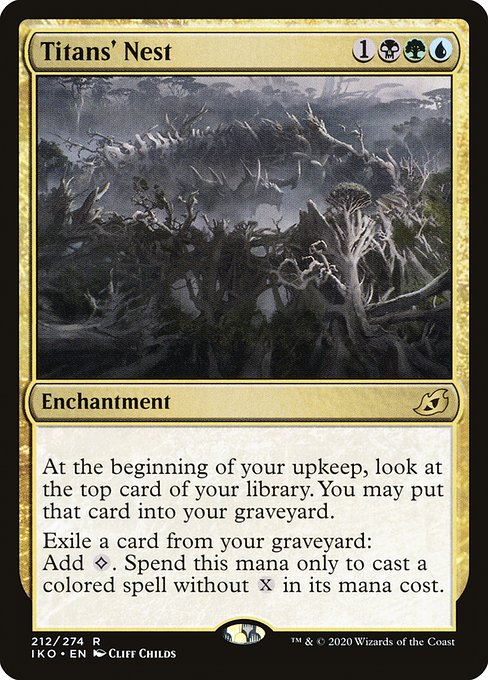
It’s Sultai Ascendancy, except for one additional mana, it gives all of your (non-X, non- colorless spells) Delve! It’s cool seeing a callback to the last wedge set that leverages Play Design’s perspective on card balancing. I wouldn’t be surprised if this is much, much stronger than it appears to be—Delve is a busted mechanic, after all, but maybe not as strong as Fires of Invention. Regardless, it’s a sweet design to create a cool deckbuilding puzzle for Constructed and an advantage engine in Limited.
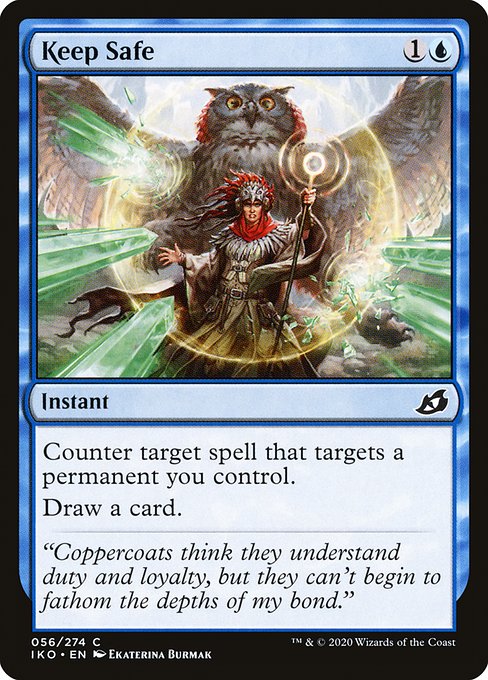
Hindering Light is such a smart inclusion in Ikoria. The set wants you to go big Mutating, but doesn’t offer much insurance beyond the Mutate trigger—unless you’re blue. While something like Turn Aside is much more efficient at the task of protection, it feels so much better to get someone with Keep Safe. This card creates powerful swingy moments and memorable stories, which is exactly the kind of effect you’re happy to create on possible sideboard, possible maindeck material.
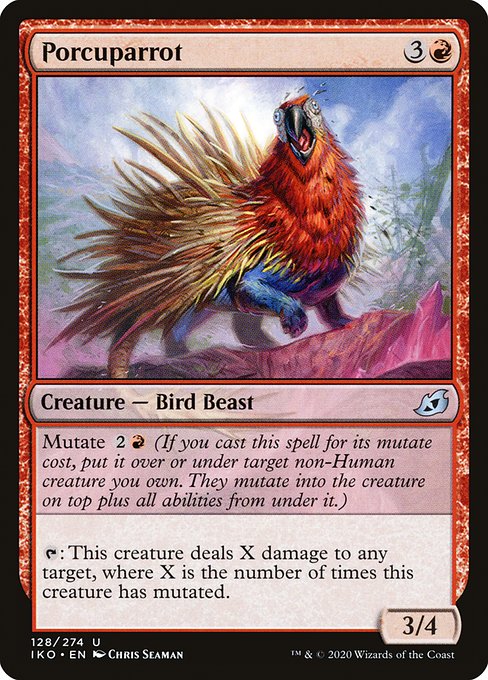
Absolutely nothing is exciting about this card the first time you Mutate it, but it has an incredibly high ceiling. You can give it Deathtouch and have repeatable creature kill, give it Lifelink for added benefit, or Mutate it a bunch and build your own Lightning Crafter. It uses the affordances of Mutate and shareable abilities to take a card with dangerous play patterns (a pinger that hits creatures for no mana) to both lower the floor and greatly increase the ceiling. That’s smart design.
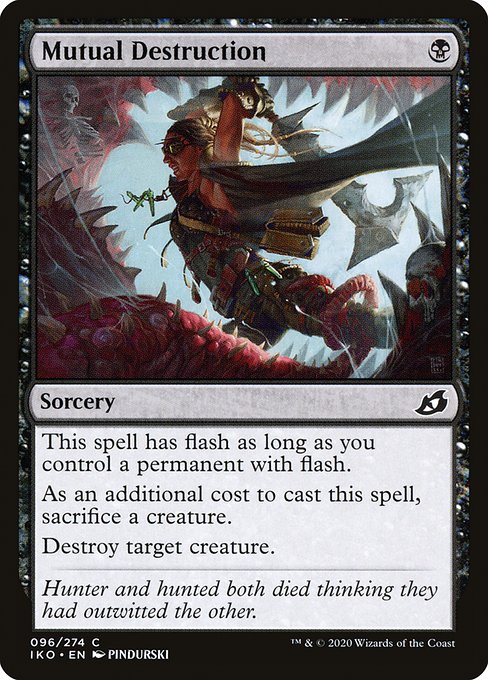
Cunning Nightbonder, Slitherwisp, and Mutual Destruction are weird. They’re the oddest of the already weak allied-color keyword support cards, tracking a quality that hasn’t been tracked much this side of Mystical Teachings. It feels weird tracking cards with flash but not instants. Yes, they’re different qualities, but their existence shines a light on how Magic could have eliminated the instant card type and added Flash as a supertype.
They just feel too tricky for their own good in supporting a Limited archetype that really lacks support—and probably can’t be heavily supported, as UR demonstrated in Theros Beyond Death.
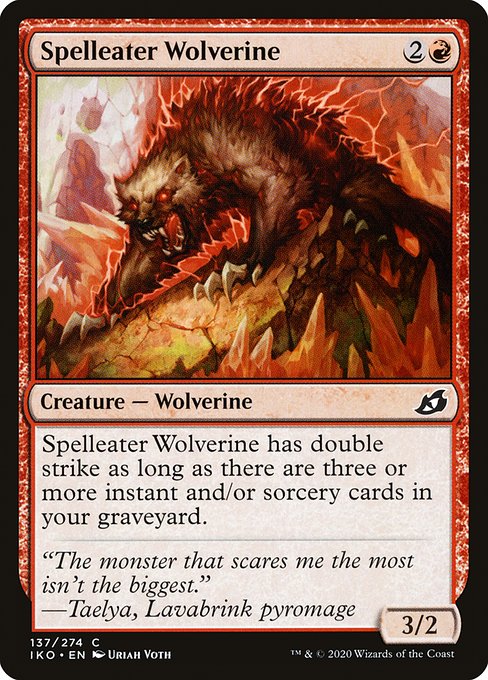
Ugh, what a gorgeously simple card. Jump through a simple hoop (which is facile in a set with lots of Cycling 1 spells) and you upgrade an anemic three drop into something that’d normally cost five or six mana. Prickly Marmoset is an even better three drop. It might be too good for the cost, but it’s nice seeing red got solid curve fillers with high ceilings.
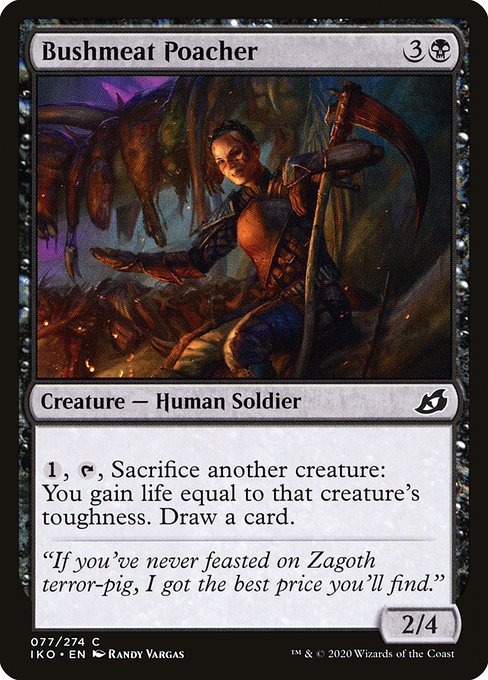
Ugh, what a smart inclusion. Absolutely nothing she does is flashy, but the combination of components is exactly what the format needs. She’s expensive enough that there’s a cost to playing her. She’s a human, which makes her even weaker, but her ability is one at odds with attacking (something all Mutate creatures not named Parcelbeast encourage). There’s so much to do with a good sacrifice outlet, such as getting value off creatures under Pacifism, or turning chump blocks, over-wide attacks, Whisper Squads into advtange. She’s even just large enough that with the +1/+0 from Perimeter Sergeant, she attacks well.
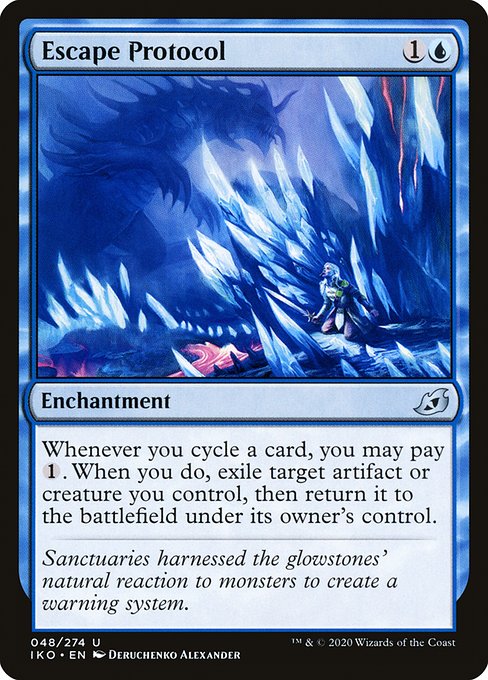
Astral Slide is back, blue, and much fairer (and weaker). It also being able to blink artifacts is an interesting twist, potentially hinting at an artifact-heavy expansion coming in early 2021. That said, I dislike its execution in Ikoria. It reads like a uncommon build-around enchantment (something I generally love), but there’s vastly insufficient support. Sure, there’s plenty of support for Escape Protocol in the Cycling deck (which is already the strongest archetype); but unlike payoffs like Savai Thundermane and Ominous Seas which just work with any Cycling card, you need a third engine piece in blink-worthy creatures. And there are just aren’t many solid ETB effects to justify putting a do-nothing enchantment in your deck.
The dearth of ETB triggers is likely a necessary consequence of Mutate. Not only have many ETB effects been redone as Mutate effects, but Mutate’s mere existence makes non-human ETB creatures better (as anyone who’s curved Farfinder into Cavern Whisperer can attest). So yes, you can blink Mentors for incredibly slow value engines or make Sleep Dart/Farfinder into a mediocre draw engine; but there is nothing akin to Elvish Visionary or Sparkmark Apprentice that’s got a fine ETB effect and comes down cheaply. This card could exist for Constructed, or it could be printed in the hopes that it enables something for Pioneer, but it’s disappointing when traps like this can spring on unsuspecting players in draft.
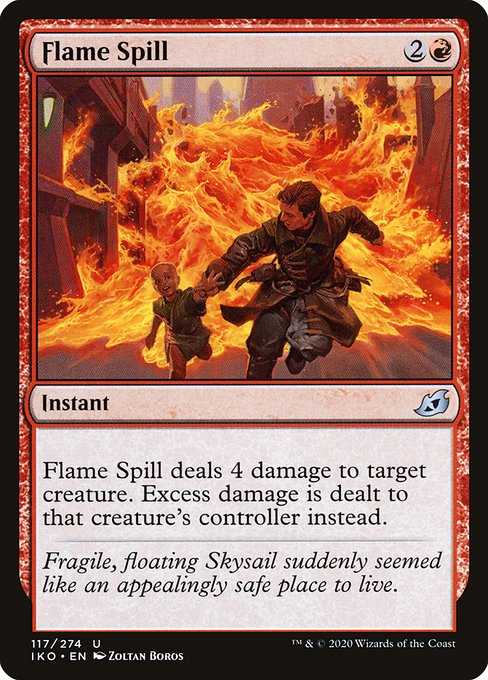
Magic is regularly home to major design innovations—every set has new mechanics and twists on previous mechanics. It’s less common that we notice innovations in Magic’s vocabulary (at least, on a level that’s easily understood without being a judge), but Ram Through and Flame Spill are exactly that. It’s very cool seeing Liquid Fire finally appear as intended (well, other than Super-Duper Death Ray). It makes one wonder what else might be possible with some twists in language, as well as how else Magic might be able to new interpretations of its rules to make cards that read a bit more like English and a bit less like technical manuals (a constant topic of discussion at work and among game designers).
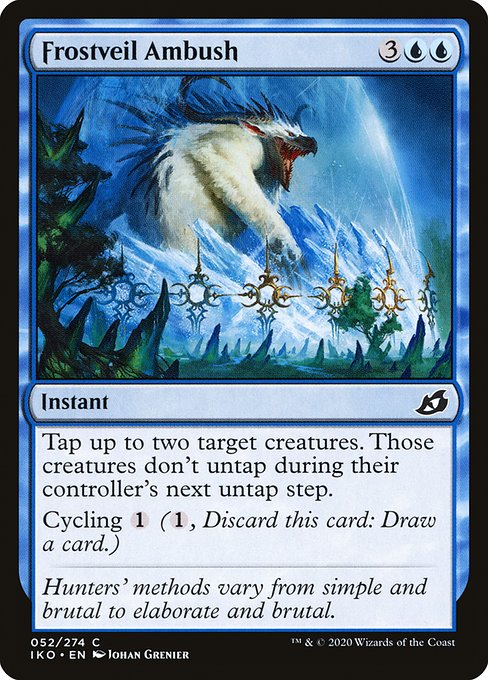
By virtue of being so experimental, Ikoria has more cards for me to kvell (and kveth) about than any set in years. It’s exciting to have so, so much to dive into, but while I’d love to dissect all the Cycling cards, the templating of Mythos of Nethroi, and what Blood Curdle means for Limited going forward, there’s only so much time in the day. We’ll leave it here to potentially revisit in the future.
Hope you’re all enjoying Ikoria and staying both safe and sane in these bizarre times. And, as always, thanks for reading!
—Zachary Barash is a New York City-based game designer and the commissioner of Team Draft League. He designs for Kingdom Death: Monster, has a Game Design MFA from the NYU Game Center, and does freelance gatame design. When the stars align, he streams Magic (but the stars align way less often than he’d like).

